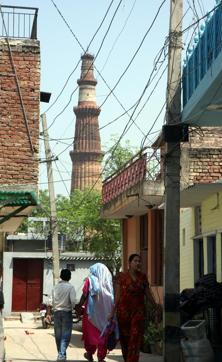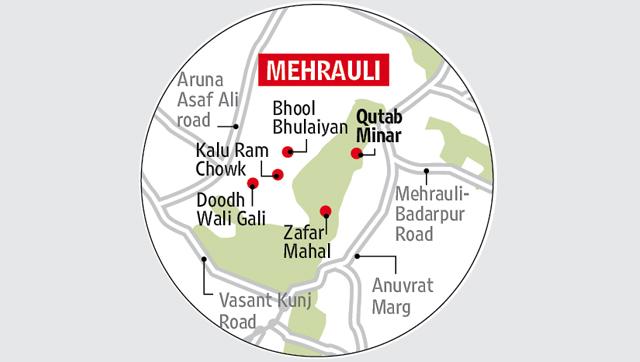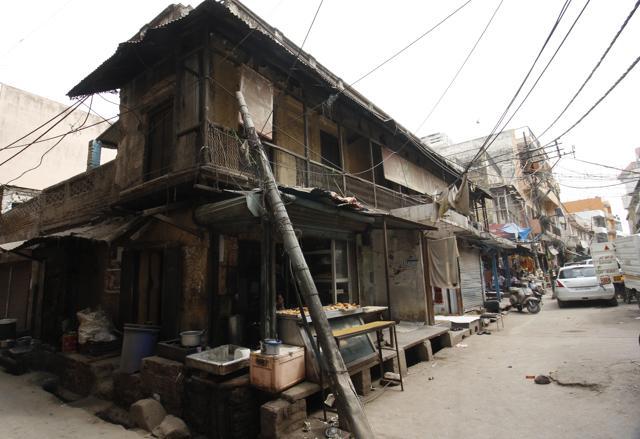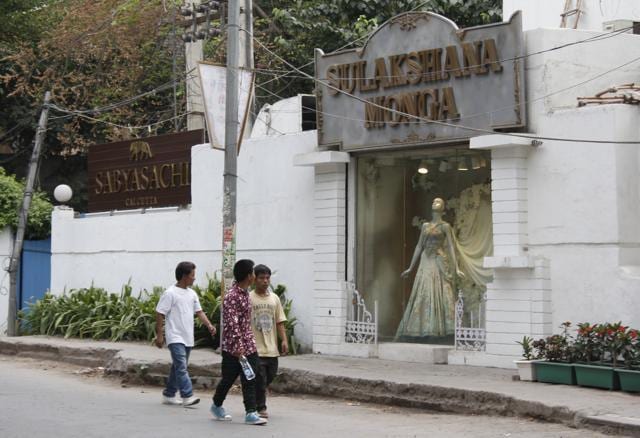South Delhi: Urban sprawl robs Mehrauli’s charm
Each neighbourhood and monument in Mehrauli has a story to tell, but unplanned growth over the years has left it crumbling and gasping for space
Lying on the outskirts of the capital, Mehrauli is said to be one of the oldest cities of Delhi. The ruins of Lal Kot (established by 11th-century Tomar Rajput rulers), the magnificent Qutab Minar (a world heritage site) the baolis (stepwells), gardens, tombs, Sufi shrines and mosques and Zafar Mahal (the monsoon palace of last Mughal ruler, Bahadur Shah Zafar) tell the tales of the city’s history. Then there are the dense greens in the Archaeological Park, narrow lanes and arches leading to old-style buildings and havelis and the bustling main bazaar. Mehrauli underwent drastic transformation post-Independence. It fell prey to haphazard growth with old havelis and bazaars struggling to keep pace with contemporary designer stores, hotels and apartment blocks.

Mehrauli of old times
The township spreads along the Archaeological Park, down to the Mehrauli-Gurgaon (MG) Road. One of the legends surrounding its name is it derived its name from Persian, ‘mehr’, meaning grace and ‘auliya’, referring to a saint.
Old-timers claimed that many of the individual houses here date back to the pre-Partition years. Sandeep Bali, 47, is a resident and runs the RWA group Mehrauli Meri Shaan’s. His family settled here in 1947 after fleeing from Kurg in Rawalpindi (in Pakistan).

He remembers the house of his growing-up years near the dargah of famous Sufi saint Khwaja Qutub Bhakhtiar Kaki. Bali’s house then had a large courtyard, spacious balconies, high ceilings, multiple windows and a backyard to play.
“Earlier each house was built on this design. However, only a few of these have remained now, as most owners have either sold them off to move into builder flats or converted floors to be given on rent. We still have the old house where two of my brothers live with their families while I moved out of it as the area around Dargah became too crowded,” said Bali.

Rampant Urbanisation
The cultural flavour of Mehrauli has been ruined over the years by unplanned construction and rampant encroachment eating into its legacy. The lanes are marked by open sewers and heaps of garbage at almost every corner.
The landscape and its relationships within the Zafar Mahal complex was dealt a serious blow, as the new occupants altered and demolished structures to meet their requirements. Many such structures such as the Shahi Bagichi (royal garden), Philkhana (elephant stables of Bahadur Shah II) and Khwaspura (maids’ quarters) can be barely located today. The Hauz-e-Shamsi, a large water body next to Zafar Mahal, lies in a state of neglect. The water level has gone down and it is littered with garbage.
The baolis too have become spaces for dumping waste.
In 1962, with the Master Plan came planned development which escalated land prices making it a good bargain for owners to sell property to real estate builders. These demolitions and additions in the form of unauthorised construction continue to go unchecked and the heritage structures are fast disappearing.
As one enters Mehrauli through the bus terminal, the centre point of the area facing the imposing Adham Khan’s tomb or the Bhool-Bhulaiya, the triangular stretch is congested with buses, autos, private vehicles and fruit and vegetable vendors all negotiating room for movement. Autos are parked along the boundary of the ASI-protected tomb and garbage is strewn along the roadsides. In a striking contrast lies the Qutab Complex road, which leads to the alley with high-end designer boutiques and restaurants.
The old Mehrauli has squeezed within these concrete structures gasping for breath. Bali said the locality has become a prison now with tall buildings and flats coming up at the face of every house. The eight-feet lanes have shrunk to five feet or less with people extending their homes or shops to the road. There are ramps on both sides of the streets covering half of its width.
“My family has been living in Mehrauli for years. It has wonders hidden in every lane. But I am appalled to see the encroachments ruin its rich past day by day,” said RK Popli, 71, another resident.
Initially, Mehrauli had only around 1,200-1,500 homes while urban Mehrauli’s population today is 2.5 lakh (approx).
Bali said there used to be ample land and people used to gift pieces of land to their relatives on occasions. “The government compensation was five paise for one square feet of land, which now runs in lakhs,” he said. He recalled playing cricket in open grounds which are now part of Vasant Kunj and the mango groves on the way to Kishangarh.
RT Sharma, 81, a resident, said, “Colonies like Vasant Kunj, Vasant Vihar, RK Puram were developed later. There used to be open green spaces to play. People living at the other end of the city used to come to Mehrauli during summer vacations to enjoy the greens, the mangoes and to live the organic life, which does not exist anymore.” Now, there are flats everywhere, he said. Unplanned growth has turned the area into an over-crowded and congested neighbourhood.
“Mehrauli is losing its character fast. Ongoing construction can be seen at every 50 metres. It is painful to see the historic Zafar Mahal being dwarfed by a building coming up adjacent to its wall. The blatant violation of norms is overlooked by the government leading to a slow decay of its rich heritage,” said Hamid Sheikh, 71.


Remnants
Some old-style doors and windows are the only remnants of the past which Sheikh feared will also disappear in a few years under the wave of commercialisation.
Till the 70s, a street known as the Doodh wali Gali was famous for 15-20 shops selling milk and sweetmeats, it now houses a series of jewellery shops. Similarly, ‘Belinda Wali Gali’ is now called Readymade Gali, as it houses a number of readymade garments shops.
“Doodh Wali Gali used to be a major spot to socialise and interact. People would throng here in the mornings and evenings to catch up over healthy drinks and snacks. The simplicity and charm of that era has dissolved into rapid growth and urbanisation,” said, Kishori Lal, who owns a sweetmeat shop here.
The main bazaar around Kalu Ram Chowk, which at present stretches from Bhool-Bhulaiya to Andheria Modh and is severely congested, used to be a small bazaar in the area of 500 metres only.
“The bazaar still has the old-time arches and several havelis. Around 15-20 families continue to live inside one of the havelis,” said Bali.




